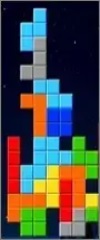- Home
- Better Memory
- Tip of the Tongue
Beating Tip-of-the-Tongue: How to Not Forget
"What's the name of that restaurant again? It's on the tip of my tongue..."

Tip-of-the-Tongue forgetting
You know the feeling. You can't seem to bring the information to the front of your mind. That's "tip of the tongue" phenomenon, and it is a failure of memory retrieval.
To remember anything, your brain must learn it, retain it awhile, then recall it.
Those are separate processes. As brain researchers have found, most failure of remembering happens in the last stage, the retrieval ("recall") stage.
How can you remember when tip-of-tongue is preventing you? Create mental cues at the time of learning that will help you recall the fact later.
That way, if your natural memory can't quite remember the information, you can use your intentionally created memory hook to access the memory through the right-brain's visual memory pathway.
A mental cue is simply a reminder. Many people create reminders automatically, without really thinking about it.
For instance, suppose you meet someone in your neighborhood named Tom Smith. You happen to notice he looks a bit like the actor Tom Cruise.
That's a nice coincidence that makes it easy to remember your neighbor's first name.
But you don't have to rely on such happy coincidences. You can take this much further and make memory hooks for just about anything.
Using the visualization and association memory technique, you can create a memory cue for all information you want to remember.
Having such a mental cue or reminder on tap greatly increases your chance of remembering.
We learn best by associating with what we already know. Mental cues, even artificial ones like crazy mental images from "visualizing and associating", form additional pathways to your memory.
How to Create Mental Cues to Defeat Tip of the Tongue
Does creating mental cues sound complicated? It isn't. Here is a simple example:
You eat at a new restaurant, The Macaroni Grill, and want to remember the name of the restaurant later. To create a strong memory for the restaurant name, associate the name with a mental image you already know well. Then link this image to your memory of eating there.

My memory hook for "The Macaroni Grill"
Call to mind the dining area where you just ate. Do this right after you leave the restaurant.
Now use your creative imagination to visualize the following crazy image: Giant macaroni noodle characters eating at that restaurant's tables instead of people.
See this bizarre image clearly in your mind, with as much detail as you can muster.
Here's how this exercise will help during retrieval. The next time someone asks you where you ate recently, first recall the main dining area in your mind's eye.
You'll probably find you can recall what the restaurant looks like on the inside, even if the name doesn't appear immediately in your memory. Most people can remember what locations look like very well.
As you recall details in the restaurant's dining area as clearly as you can, the image of giant macaroni noodle customers seated at the tables should pop into your mind. Those macaroni characters are your "cue" (or clue) about the name of the restaurant.
Aha! The Macaroni Grill.
Your Filing Cabinet of the Mind
According to researchers, most forgetting is "cue-dependent" forgetting. A cue is like the label on a folder. It provides the hook for you to fish the fact from your memory.
A cue is a clue, a reminder. It is a link, an association, to information that has been stored in long-term memory. A strong mental cue is like the hook and line in fishing. It helps you reel in the facts you know are there but can't quite recall without a little assistance.
As another analogy, consider the humble filing cabinet. Searching for a particular document is easy in a neatly organized filing cabinet.
In each drawer, labels on the folders indicate where types of documents are filed.
Now imagine trying to locate the same document among thousands of papers tossed in a large box. This would take a long time. You might not even be able to find it in the mess.
To remember more, practice structuring your memory like a filing cabinet. Whenever you encounter a fact you want to remember, actively create a memory association.
One of the most effective association methods is to imagine a silly, bizarre, even impossible picture that connects the information you want to remember with details you know well. This technique is one of the most powerful memory tricks you will ever run across.
Published: 04/03/2015
Last Updated: 06/11/2020

Newest / Popular
Multiplayer
Board Games
Card & Tile
Concentration
Math / Memory
Puzzles A-M
Puzzles N-Z
Time Mgmt
Word Games
- Retro Flash -
Also:
Bubble Pop
• Solitaire
• Tetris
Checkers
• Mahjong Tiles
•Typing
No sign-up or log-in needed. Just go to a game page and start playing! ![]()
Free Printable Puzzles:
Sudoku • Crosswords • Word Search







